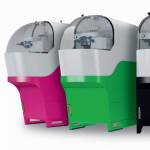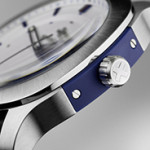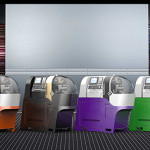Home depot starts selling 3-D printers in stores for first time
Home Depot Inc. (HD), the world’s largest home-improvement chain, will start selling 3-D printers today in stores for the first time, pushing deeper into a market that was once the domain of engineers and hobbyists.
Home Depot is selling devices from MakerBot, a 3-D printer maker acquired by Stratasys Ltd. (SSYS) last year, in 12 locations as part of a pilot project, the companies said. The effort will include stores in California, Illinois and New York.
“It’s a pilot for us to test a potential disruptive technology, and to make sure we are on the forefront of a new innovative product,” Joe Downey, an online merchant at Atlanta-based Home Depot, said in an interview.
The move builds on Home Depot’s decision to offer the MakerBot printers on its website three months ago. Though the devices aren’t likely to create a major new source of revenue, the chain is betting that they’ll appeal to forward-thinking contractors and do-it-yourselfers. Customers can use the printers to create parts and supplies that might be handy for repairs, such as cup holders, U-clips and pipe-stakes.
MakerBot’s partnership with Home Depot is a “step into the mainstream,” said Bre Pettis, chief executive officer of Brooklyn, New York-based MakerBot. “Mom, dad, contractors, interior designers — we’re looking forward to blowing their minds and making them MakerBot lovers.”
As the home-improvement field faces increased competition from specialist retailers and e-commerce, new technology will become a more important way for stores to differentiate themselves, said Jocelyn Phillips, an IBISWorld analyst.
Aging Population
The industry is contending with slowing growth in coming years, according to IBISWorld projections. Sales will increase 1.7 percent annually through 2019, compared with a 2.6 percent gain in the past five years, the research firm said.
The U.S. population also is aging, which will decrease the number of homeowners in the next 10 years, said Seth Basham, an analyst at Wedbush Morgan Securities in New York.
Home Depot is the home-repair market leader — with $78.8 billion in revenue last year — followed by Lowe’s Cos. (LOW), which had $53.4 billion. Given the size of the total market, the MakerBot partnership will not “move the needle financially for Home Depot,” said Joseph Feldman, an analyst at Telsey Advisory Group in New York.
Instead, the move is part of the company’s efforts to stay ahead of the curve, he said.
“If they can capture some of the market share first, then they will,” Feldman said.
Learning Process
The 3-D printing industry is still in its early stages and will need people to become educated on how to use software to design objects, said Tim Shepherd, an analyst at research firm Canalys in the U.K.
“Ten years from now, it will be quite common for people to have 3-D printers in their homes,” he said.
The consumer market for 3-D printing will reach $600 million in 2017, up from $70 million to $80 million last year, according to Kenneth Wong, an analyst at Citigroup Inc. in San Francisco.
For retailers, the emerging market presents a double-edged sword. If customers create their own supplies and components at home, there’s less need to order something from a store.
Home Depot and MakerBot say they’re not worried about that.
“You can’t use it as a hammer,” Pettis said. Only certain materials can be printed in the MakerBot machine — metal cannot — and customers will still have to go to the store to buy the materials for the printer.
The 3-D printing technology also isn’t as far along as consumers may think, Canalys’s Shepherd said. It takes about an hour to print one chess piece, he said.
“There’s a perception in the public mindset that 3-D printing is like what they see in ‘Star Trek,’” Shepherd said. “If that’s the idea they have, they’ll be disappointed.”
by Selina Wang
Source: Bloomberg.com








